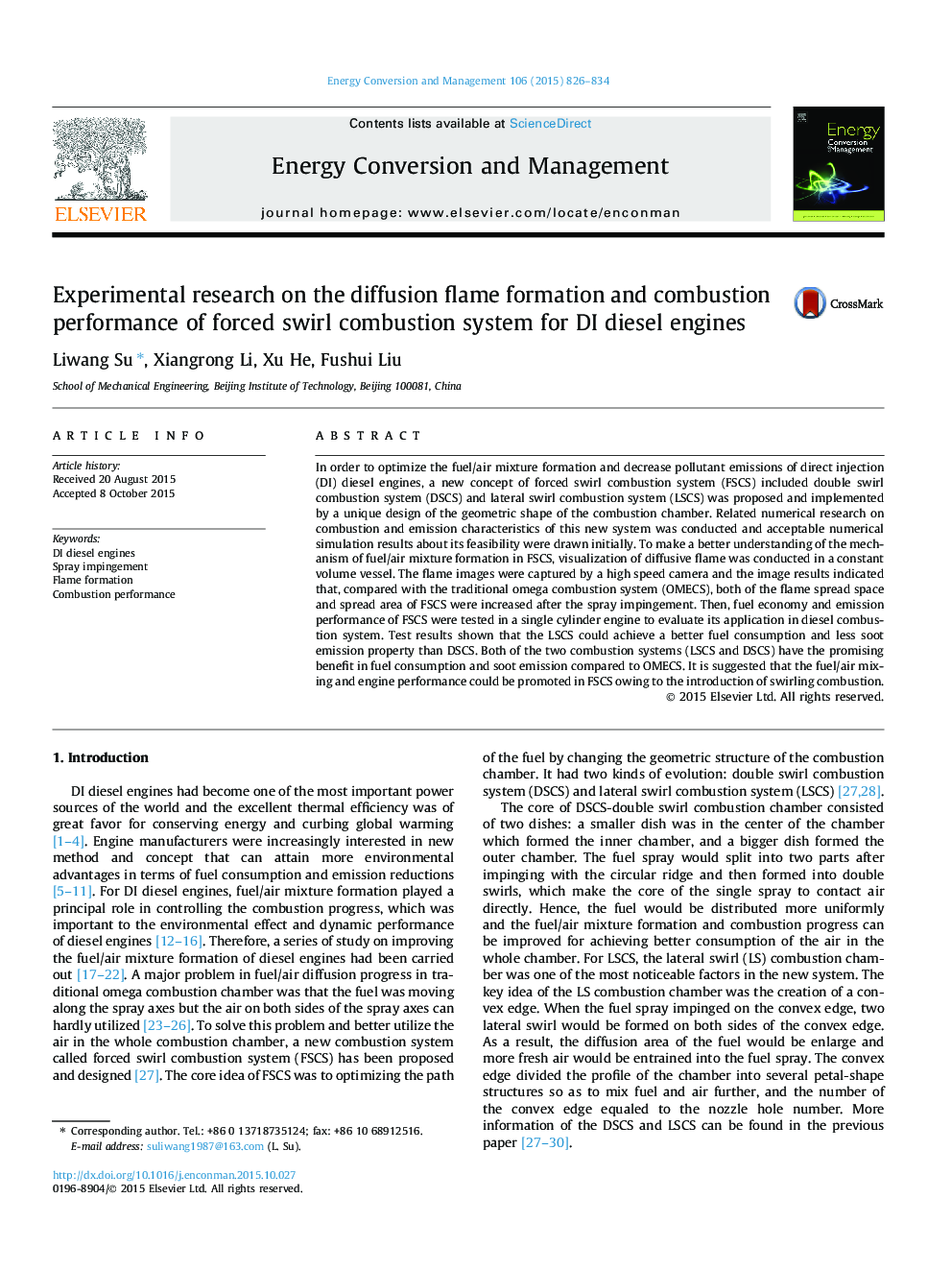| Article ID | Journal | Published Year | Pages | File Type |
|---|---|---|---|---|
| 7161683 | Energy Conversion and Management | 2015 | 9 Pages |
Abstract
In order to optimize the fuel/air mixture formation and decrease pollutant emissions of direct injection (DI) diesel engines, a new concept of forced swirl combustion system (FSCS) included double swirl combustion system (DSCS) and lateral swirl combustion system (LSCS) was proposed and implemented by a unique design of the geometric shape of the combustion chamber. Related numerical research on combustion and emission characteristics of this new system was conducted and acceptable numerical simulation results about its feasibility were drawn initially. To make a better understanding of the mechanism of fuel/air mixture formation in FSCS, visualization of diffusive flame was conducted in a constant volume vessel. The flame images were captured by a high speed camera and the image results indicated that, compared with the traditional omega combustion system (OMECS), both of the flame spread space and spread area of FSCS were increased after the spray impingement. Then, fuel economy and emission performance of FSCS were tested in a single cylinder engine to evaluate its application in diesel combustion system. Test results shown that the LSCS could achieve a better fuel consumption and less soot emission property than DSCS. Both of the two combustion systems (LSCS and DSCS) have the promising benefit in fuel consumption and soot emission compared to OMECS. It is suggested that the fuel/air mixing and engine performance could be promoted in FSCS owing to the introduction of swirling combustion.
Related Topics
Physical Sciences and Engineering
Energy
Energy (General)
Authors
Liwang Su, Xiangrong Li, Xu He, Fushui Liu,
